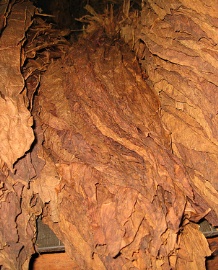Commentary: What is Meant by Cigar Texture?
16 Aug 2012
You may come across the word “texture†in cigar reviews or friendly conversations at tobacconists. But what exactly do we mean by texture when we’re talking about cigars?
 I’m certainly guilty of using the word in an admittedly vague way, particularly when it comes to the reviews I write. I often mention texture when I’m describing the smoking characteristics of the particular cigar I’m examining. Usually right after the flavor, which I personally consider to be a completely different characteristic.
I’m certainly guilty of using the word in an admittedly vague way, particularly when it comes to the reviews I write. I often mention texture when I’m describing the smoking characteristics of the particular cigar I’m examining. Usually right after the flavor, which I personally consider to be a completely different characteristic.
To me, flavor is the sum of the identifiable notes I find while smoking a cigar—coffee, leather, nuts, cream, cocoa, etc. Texture, on the other hand, is the way the overall taste hits my palate, or the way the profile coats and lingers in my mouth. Texture can be chalky, syrupy, dry, etc. Others use the term “mouth-feel†to mean the same thing.
The difference between flavor and texture in cigars is like the difference between taste and consistency in food. Any food worth eating has taste—sour, sweet, salty, etc.—but it will also have a consistency—chewy, crispy, slimy, crunchy. Any chef will consider both taste and consistency while producing a dish, just like any blender will consider flavor and texture.
Speaking of cigar blenders, I’ve come to learn that producers of cigars have a completely different way of thinking about texture that everyday cigar enthusiasts often overlook. While on Cigar Safari earlier this year in Nicaragua with the fine folks at Drew Estate (see our coverage here, here, here, and here), I learned that the word “texture†is also used to describe the consistency of tobacco leaves after harvest but before hitting the rolling tables. Understanding the texture of tobacco is key to knowing when the fermentation process is complete and the leaves are ready to become cigars.
Jonathan Drew spoke about how the Cubans and then Nestor Plasencia became the first cigar producers to really understand texture and incorporate it into their operations. Many variables contribute to the consistency of a particular leaf—including seed origin, where the seed was grown, irrigation, and fertilizers, just to name a few. Then, in the case of Drew Estate, leaves are selected and sorted by texture, and the texture is closely monitored to help guide the fermentation and aging process.
I remember Jonathan Drew and Steve Saka showing us literally tons of leaves in the preparation phase of driving tobacco to peak condition before allowing it to be used for rolling. I especially remember getting to examine stalk-cut Habano capa as it was being readied for the T52 blend. Drew and Saka talked at length about the oils that oozed from the leaves after applying the slightest pressure with a finger, the shine of the tobacco, and the tooth. This is what they mean by “texture,†and this is how they let the tobacco communicate to them when it is ready.
As consumers of cigars, you and I mostly talk about texture in the way a cigar hits our palate. Some of the best cigar producers, on the other hand, are referring to the physical attributes of individual leaves before they become cigars. I think the distinction is important to understand in our education of the world of cigars.
photo credit: Stogie Guys

 Patrick Ashby
Co-Founder & Editor in Chief
Patrick Ashby
Co-Founder & Editor in Chief Patrick Semmens
Co-Founder & Publisher
Patrick Semmens
Co-Founder & Publisher George Edmonson
Tampa Bureau Chief
George Edmonson
Tampa Bureau Chief
Great insight! Thanks. I guess I always just thought of texture as the consistency of the wrapper leaf — since that's the only leaf I can see. But I understand what you mean by taxture in flavor, and I also get that binder and filler leaves also have texture.
I think I need to take the plunge and sign up for that Cigar Safari, if they'll have me. Sounds like you guys learned a ton down there, and the videos turned out great.
Great Article. Texture is the most important word in the tobacco biz/
And Trouble Trouble, you're invited …. http://www.cigarsafari.com
Best,
JD
Awesome. Working on cutting a deal with my wife now…
Love your cigars, by the way. T52 is my desert island smoke!